Lixia Xiao
Advanced Codebook Design for SCMA-aided NTNs With Randomly Distributed Users
Apr 07, 2025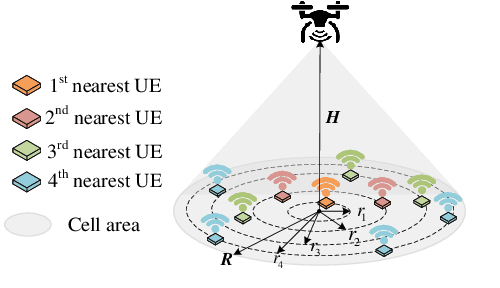
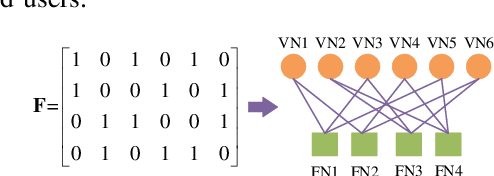
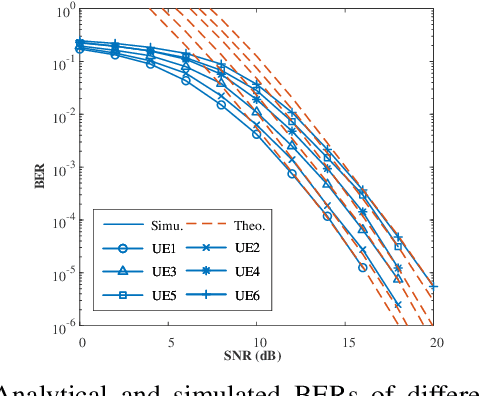
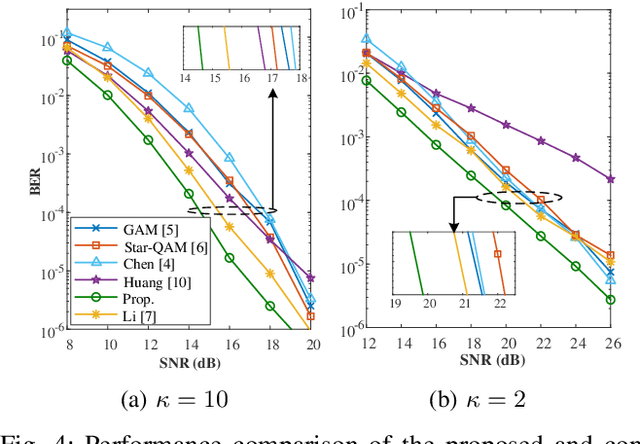
Abstract:In this letter, a novel class of sparse codebooks is proposed for sparse code multiple access (SCMA) aided non-terrestrial networks (NTN) with randomly distributed users characterized by Rician fading channels. Specifically, we first exploit the upper bound of bit error probability (BEP) of an SCMA-aided NTN with large-scale fading of different users under Rician fading channels. Then, the codebook is designed by employing pulse-amplitude modulation constellation, user-specific rotation and power factors. To further reduce the optimization complexity while maintaining the power diversity of different users, an orthogonal layer-assisted joint layer and power assignment strategy is proposed. Finally, unlike existing SCMA codebook designs that treat all users as one super-user, we propose to minimize the BEP of the worst user to ensure user fairness. The simulation results show that the proposed scheme is capable of providing a substantial performance gain over conventional codebooks.
Amplitude-Domain Reflection Modulation for Active RIS-Assisted Wireless Communications
Mar 27, 2025Abstract:In this paper, we propose a novel active reconfigurable intelligent surface (RIS)-assisted amplitude-domain reflection modulation (ADRM) transmission scheme, termed as ARIS-ADRM. This innovative approach leverages the additional degree of freedom (DoF) provided by the amplitude domain of the active RIS to perform index modulation (IM), thereby enhancing spectral efficiency (SE) without increasing the costs associated with additional radio frequency (RF) chains. Specifically, the ARIS-ADRM scheme transmits information bits through both the modulation symbol and the index of active RIS amplitude allocation patterns (AAPs). To evaluate the performance of the proposed ARIS-ADRM scheme, we provide an achievable rate analysis and derive a closed-form expression for the upper bound on the average bit error probability (ABEP). Furthermore, we formulate an optimization problem to construct the AAP codebook, aiming to minimize the ABEP. Simulation results demonstrate that the proposed scheme significantly improves error performance under the same SE conditions compared to its benchmarks. This improvement is due to its ability to flexibly adapt the transmission rate by fully exploiting the amplitude domain DoF provided by the active RIS.
DAFT-Spread Affine Frequency Division Multiple Access for Downlink Transmission
May 06, 2024Abstract:Affine frequency division multiplexing (AFDM) and orthogonal AFDM access (O-AFDMA) are promising techniques based on chirp signals, which are able to suppress the performance deterioration caused by Doppler shifts in high-mobility scenarios. However, the high peak-to-average power ratio (PAPR) in AFDM or O-AFDMA is still a crucial problem, which severely limits their practical applications. In this paper, we propose a discrete affine Fourier transform (DAFT)-spread AFDMA scheme based on the properties of the AFDM systems, named DAFT-s-AFDMA to significantly reduce the PAPR by resorting to the DAFT. We formulate the transmitted time-domain signals of the proposed DAFT-s-AFDMA schemes with localized and interleaved chirp subcarrier allocation strategies. Accordingly, we derive the guidelines for setting the DAFT parameters, revealing the insights of PAPR reduction. Finally, simulation results of PAPR comparison in terms of the complementary cumulative distribution function (CCDF) show that the proposed DAFT-s-AFDMA schemes with localized and interleaved strategies can both attain better PAPR performances than the conventional O-AFDMA scheme.
Channel Estimation for AFDM With Superimposed Pilots
Apr 16, 2024
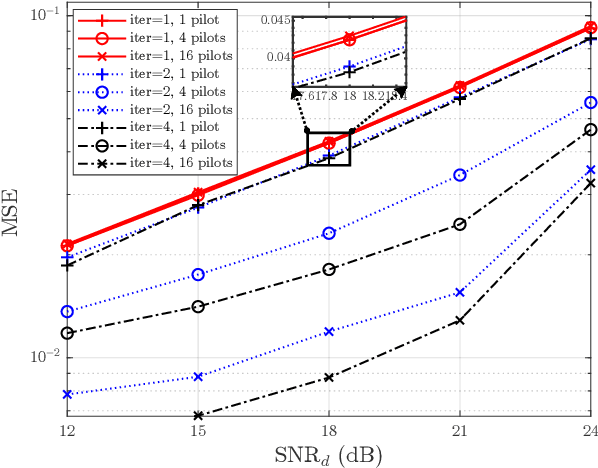
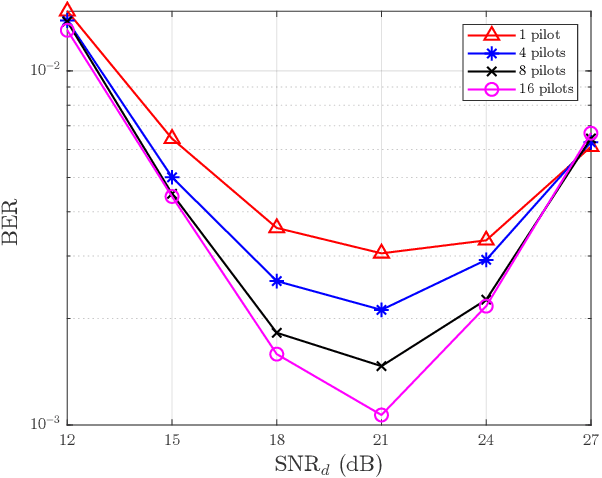
Abstract:The recent proposed affine frequency division multiplexing (AFDM) employing a multi-chirp waveform has shown its reliability and robustness in doubly selective fading channels. In the existing embedded pilot-aided channel estimation methods, the presence of guard symbols in the discrete affine Fourier transform (DAFT) domain causes inevitable degradation of the spectral efficiency (SE). To improve the SE, we propose a novel AFDM channel estimation scheme by introducing the superimposed pilots in the DAFT domain. An effective pilot placement method that minimizes the channel estimation error is also developed with a rigorous proof. To mitigate the pilot-data interference, we further propose an iterative channel estimator and signal detector. Simulation results demonstrate that both channel estimation and data detection performances can be improved by the proposed scheme as the number of superimposed pilots increases.
Design and Performance Analysis of Index Modulation Empowered AFDM System
Dec 02, 2023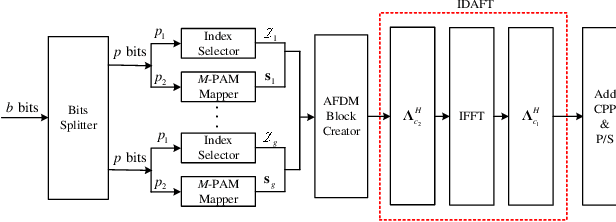
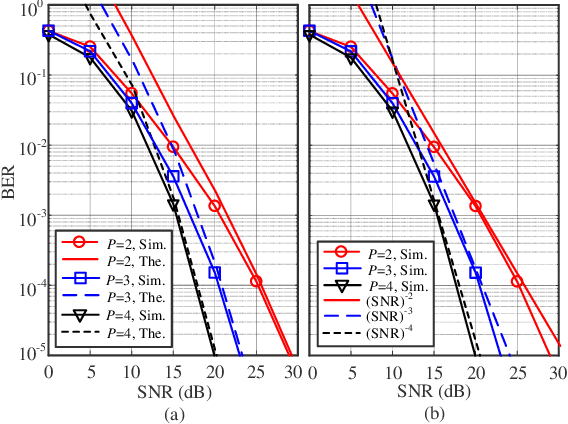
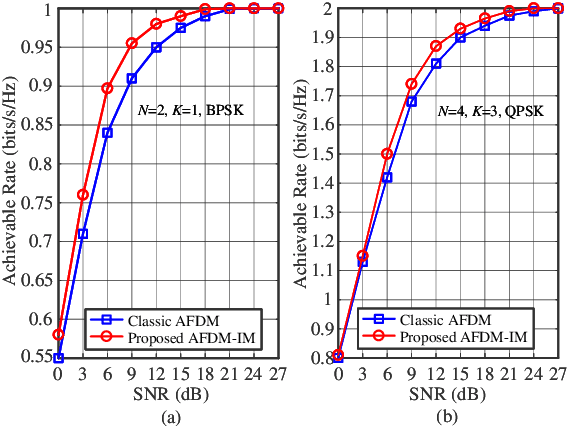

Abstract:In this letter, we incorporate index modulation (IM) into affine frequency division multiplexing (AFDM), called AFDM-IM, to enhance the bit error rate (BER) and energy efficiency (EE) performance. In this scheme, the information bits are conveyed not only by $M$-ary constellation symbols, but also by the activation of the chirp subcarriers (SCs) indices, which are determined based on the incoming bit streams. Then, two power allocation strategies, namely power reallocation (PR) strategy and power saving (PS) strategy, are proposed to enhance BER and EE performance, respectively. Furthermore, the average bit error probability (ABEP) is theoretically analyzed. Simulation results demonstrate that the proposed AFDM-IM scheme achieves better BER performance than the conventional AFDM scheme.
 Add to Chrome
Add to Chrome Add to Firefox
Add to Firefox Add to Edge
Add to Edge